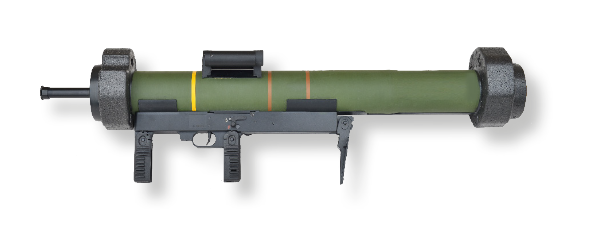
RGW 90 – versatile in every situation

The RGW 90 HH grenade launcher is ready to fire. A deployed probe is visible, guaranteeing the cumulative effect (HEAT) of the head of the projectile. The design of the weapon allows you to conveniently fold it for a shot in any position.
The decision of military planners to eliminate the regular anti-tank weapons of the motorized rifle brigade initiated the procedure for selecting a new grenade launcher for the Polish Armed Forces. The purchase of such weapons will mean a revolution, because instead of reusable RPG-7 hand grenade launchers, disposable grenade launchers will be used primarily as an infantry support weapon. A very serious candidate for such a weapon of the Polish Army is the RGW 90 modular grenade launcher offered by the German company Dynamit Nobel Defense.
Until now, the modern Polish army - in larger numbers - was armed with two types of hand-held anti-tank grenade launchers. Firstly, this is a cult weapon of this type, present in almost every war of the last half century, namely the RPG-50 reusable grenade launcher, developed at the turn of the 60s and 7s in the Soviet Union. It was created primarily as an anti-tank weapon, and over time, as new types of ammunition were introduced, it became a universal grenade launcher, copies of which are still being made in many places around the world, even in the United States. Nevertheless, the RPG-7 has a number of limitations, especially in the context of arming the Polish Army. Our RPG-7s are depleted, they lack modern sights and modern ammunition, including non-primary HEAT ammunition (although it was developed by the domestic industry, the MoD was not interested in purchasing it).
In addition, there are unavoidable limitations of this construction, i.e. a large zone of exposure to exhaust gases behind a soldier firing from an RPG-7, which significantly limits or hinders firing from enclosed spaces of small cubic capacity, and therefore convenient and efficient use of the RPG-7. weapons during combat in urban environments. The second serious drawback is the susceptibility of a grenade in flight to a side wind - the projectile is fired with an attached propellant charge, while a few meters from the muzzle, the main rocket engine is turned on, increasing its speed by more than two times, which reduces accuracy and requires great experience in shooting . The Polish Army, moreover, does not have modern RPG-76 ammunition (cumulative tandem, thermobaric, high-explosive fragmentation), on the other hand, its new types, due to the increase in the size of over-caliber projectiles, shorten the effective range of ammunition. The second type of hand-held anti-tank grenade launcher, which appeared in significant numbers in the arsenal of the Polish Army, was the single-use Polish-designed RPG-76 Komar grenade launcher. A non-permanent weapon, interesting in that the RPG-76 can be fired from inside vehicles due to the fact that the RPG-XNUMX is equipped with muzzle nozzles tilted away from the longitudinal axis of the sustainer engine, as behind the shooter there is actually no gas impact zone of the propellant charge. For this reason, the RPG-XNUMX had a folding buttstock, the unfolding of which led to the unlocking of the rocket and the sight, as well as to the tension of the firing mechanism. The mosquito, due to its small size, has a cumulative warhead that is ineffective today, with a weak subversive effect, without a self-destruct mechanism. Komaru also lacks sights other than mechanical ones.
Other hand grenade launchers - such as RPG-18, Karl Gustav, AT-4, RPG-75TB - were or are used in the Polish armed forces either in small numbers or only in selected, elite units (special forces, air-mobile units) .
It is worth being aware of the above disadvantages and limitations of these two grenade launchers, because then you can see what a completely new quality the introduction of the RGW 90 grenade launcher into the armament can provide, which would give the Polish soldiers opportunities that they never had before.
RGW 90 and Department of National Defense requirements
The introduction of new armored vehicles for the transport of motorized / motorized infantry: wheeled transporters "Rosomak" now and tracked infantry fighting vehicles "Borsuk" in the future, led to a reduction in the size of the infantry team, from which two teams (gunner and loader), armed with RPG-7, were removed . Instead, all other troops should be armed with disposable grenade launchers, more versatile in combat and volatile, allowing the flexibility to increase the team's firepower as needed.
